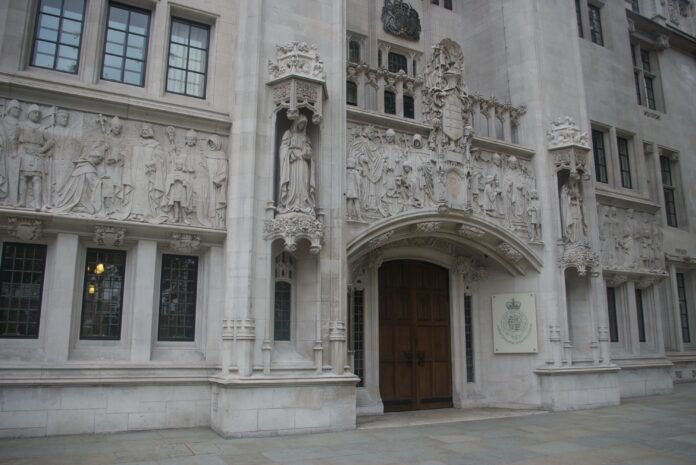The headlines blazed: “Supreme Court rules on definition of ‘woman’.” But that’s not what happened. In fact, the court stated explicitly:
“It is not the role of the court to adjudicate on the arguments in the public domain on the meaning of gender or sex, nor is it to define the meaning of the word ‘woman’ other than when it is used in the provisions of the Equality Act 2010.”
So, what did the court rule on?
At its heart, this case was about how the law interprets the word “woman” in a 2018 Scottish law that encourages equal gender representation on public boards. A group called For Women Scotland argued that the law should not include transgender women in its definition of “woman”. After a series of appeals, the case landed in the UK’s highest court.
What the Supreme Court Actually Decided
The court’s reasoning focused on how two pieces of legislation interact:
- The Gender Recognition Act 2004 (GRA), which states that someone with a gender recognition certificate (GRC) should be treated as their acquired gender “for all purposes”, and
- The Equality Act 2010, which provides legal protections against discrimination based on characteristics like sex and gender reassignment.
Here’s the core of the court’s judgment:
READ MORE: Iran Expected to Resist US Proposal to Relocate Uranium Stockpile Amid Renewed Nuclear Talks
- The GRA presumption: A person with a GRC must, under normal circumstances, be treated legally as the sex stated on the certificate.
- The Equality Act’s exceptions: However, the Equality Act uses the terms “woman” and “man” in certain contexts (e.g. pregnancy, breastfeeding, single-sex services) where it makes more sense to interpret them as referring to biological sex rather than gender identity.
- The result: The court concluded that in these contexts, the Equality Act overrides the GRA. Therefore, for the purposes of the 2018 Scottish law on public board representation, “woman” means “biological woman”, excluding trans women even if they hold a GRC.
No Change to Cis Women’s Legal Rights
Despite raising nearly £250,000 to support their case, For Women Scotland did not secure any new legal protections for cisgender women. The legal rights cis women already had remain intact.
What the decision did do was make the equality landscape more complex.
A More Fragmented Legal Category of “Woman”
Before the judgment, it was commonly accepted that in most legal contexts:
- Cis women and trans women with a GRC were considered “women”.
- Trans individuals undergoing gender reassignment (with or without a GRC) were protected under a separate category.
Now, the situation is more fragmented. There are at least six distinct legal identities:
- Cis women
- Trans women with a GRC
- Trans women without a GRC
- Cis men
- Trans men with a GRC
- Trans men without a GRC
Each group may have different rights depending on the context and the interpretation of specific legal terms in the Equality Act.
What About Real-World Impact?
As of 2020, there were reportedly no trans women on public boards in Scotland. Trans people make up just 0.44% of Scotland’s over-16 population. So, the likelihood that a cis woman would lose a board position to a trans woman is extremely low.
The 2018 law still allows boards to appoint a trans woman over a cis woman if it can be justified based on “particular characteristics or situation.”
Women-Only Spaces and Legal Confidence
Some commentators have suggested the ruling may affect the ability of women-only spaces to exclude trans women. However, the Equality Act already allows such exclusions, provided they meet certain criteria. The court’s judgment hasn’t changed that — though it might embolden some groups to use those provisions more confidently.
Trans Protections Still Exist
It’s important to stress: the court reiterated that trans people still enjoy protection under the Equality Act, whether or not they have a GRC.
Some provisions that refer explicitly to “women” — such as those protecting against discrimination while breastfeeding — now clearly apply only to cis women. But in almost all such cases, equivalent protections for trans people are available under other sections of the act, such as:
- Section 7: Protection for gender reassignment
- Section 13: General anti-discrimination provision
A Complex Case with Real Human Consequences
Crucially, no trans people were represented in the case. Former judge Victoria McCloud, who attempted to intervene, was refused permission.
And while the court made clear it was not engaging in an abstract debate, the political weaponisation of its ruling was almost instantaneous — despite the justices’ call for restraint.
This isn’t just a debate about legal technicalities. It affects real people.
Trans people are already among the most marginalised groups in society:
- They are twice as likely as cis people to be victims of violent crime.
- Over 60% report being harassed regularly.
That isn’t the court’s fault. Its role is to interpret laws as written, and its judgment is legally sound, balanced, and forensic. But it exposes a pressing need for political clarity.
Parliament Must Act
The court has done its job. Now it’s time for parliament to do its own.
The current situation — where multiple overlapping identities have varying legal meanings — is untenable in the long run. The Equality Act was designed to protect all marginalised groups. It was never meant to become a battleground of identity politics.
If legislators focused more on clarifying law and less on scoring political points, we might never have ended up here.
